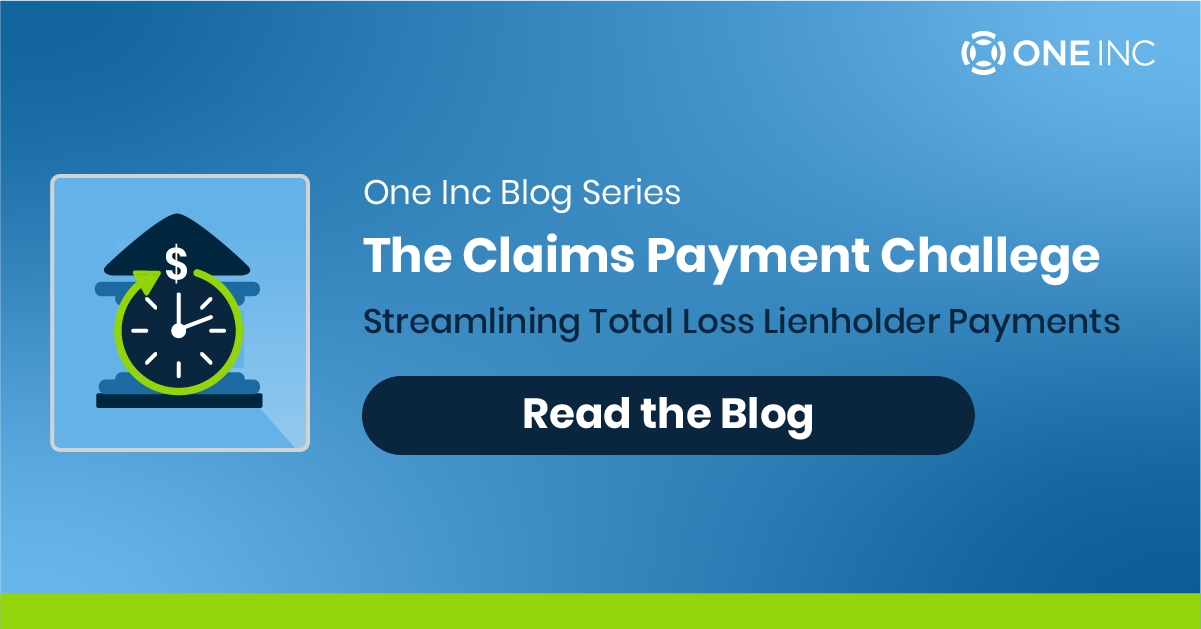| By Anne Freitas

Streamlining Total Loss Lienholder Payments (Claim Payment Challenge Part 2)
In part 1 of this four-part series, we introduced four inherent claim payment challenges involved with paper check payment (e.g. multi-party payments, total loss lienholder, mortgagee, and vendor payments). Here in part 2, we take a deeper look into the pain points of lienholder payments, what’s involved with the auto total loss process, and the benefits digitization can provide.
Accidents Happen
Car accidents are no doubt traumatic for those involved, but when a vehicle with a loan is deemed a ‘total loss’, the situation quickly becomes more stressful, and the insurance claims process becomes more burdensome for all parties concerned. Consider the following:
- Experian Automotive reports that average auto loan amounts and terms continued to increase in 2019, with 72 months (6 years) now being the most common term length across all loan types. That makes the chances extremely high that a totaled car is carrying an existing loan.
- A car’s value depreciates approximately 20% from its original value in the first year, and almost 60% in the first five years. 2 Since an insurance carrier only pays an amount deemed to be the ‘actual cash value’ (ACV) on the totaled vehicle, it is easy to understand that many people owe more on their loan that what is received in an insurance settlement.
Just imagine the stress an insured experiences! Now add to that stress the additional burden of the total loss claims process itself – a process that can be time-consuming, tedious, and frustrating for all parties involved.
When the Car Has a Loan
When a car has a loan, the financial institution (‘lienholder’) providing the loan essentially owns the vehicle and holds the title. Once the loan is paid off, the title is then released. In the situation of a ‘total loss’ claim, the insurance adjuster will present a settlement offer to the insured and also request a loan payoff amount from the lienholder. Once the lienholder receives the loan payment, it will release the title to the insurance carrier. The carrier then ‘owns’ the vehicle and can sell it to an auto salvage company. It sounds simple enough, but in reality, however, the process quickly becomes more complicated, especially when the payment is made via paper checks.
Letter of Guarantee, Lienholder Payment & Title Release
Getting the payoff details can involve many calls back and forth between the insurance carrier and the financial institution. The payoff amount changes daily, and when an insurance adjuster finally receives a ‘letter of guarantee’ with a loan payoff amount from the lienholder, the amount given is only good for 10 business days. If the lienholder does not receive the payment within that timeframe, the process begins again. Since the actual processing, mailing and delivery of paper checks can take up to 10 business days on average, it is easy to see the time constraint involved. Once payment is received, the financial institution (‘lienholder’) still has to process and deposit the check on their end for the title to be released. And as explained in part 1 of this series, the paper check may be made out to both the lienholder and the named insured on the auto policy. All payees must endorse the check before it can be cashed, causing yet another challenge to be overcome.
The Benefits of Digital Lienholder Payment
A great deal of the complications and delays involved with lienholder payments can be greatly reduced by replacing paper checks with digital lienholder payments and selecting the right digital payment solution. Selecting a comprehensive digital payment platform designed for property and casualty insurers can greatly simplify the authorization and reconciliation processes, as well as give carriers the ability to pay lienholders easily, get transferred titles faster, reduce rental car and storage expenses, and recoup money from salvage. When total loss lienholder payments are digitized, claims close faster and customer experience is positively impacted.
Stay tuned for Part 3 of our Claim Payment Challenge Series - Optimizing the Customer Experience for Mortgagee Property Claim Payments - where we take a deeper look into the cumbersome process of mortgagee property claim payments, the difference between monitored and non-monitored claims, and the benefits digitization can provide.
The Claim Payment Challenge Blog Series:
Tags: Payments

Want to read more articles like this?


